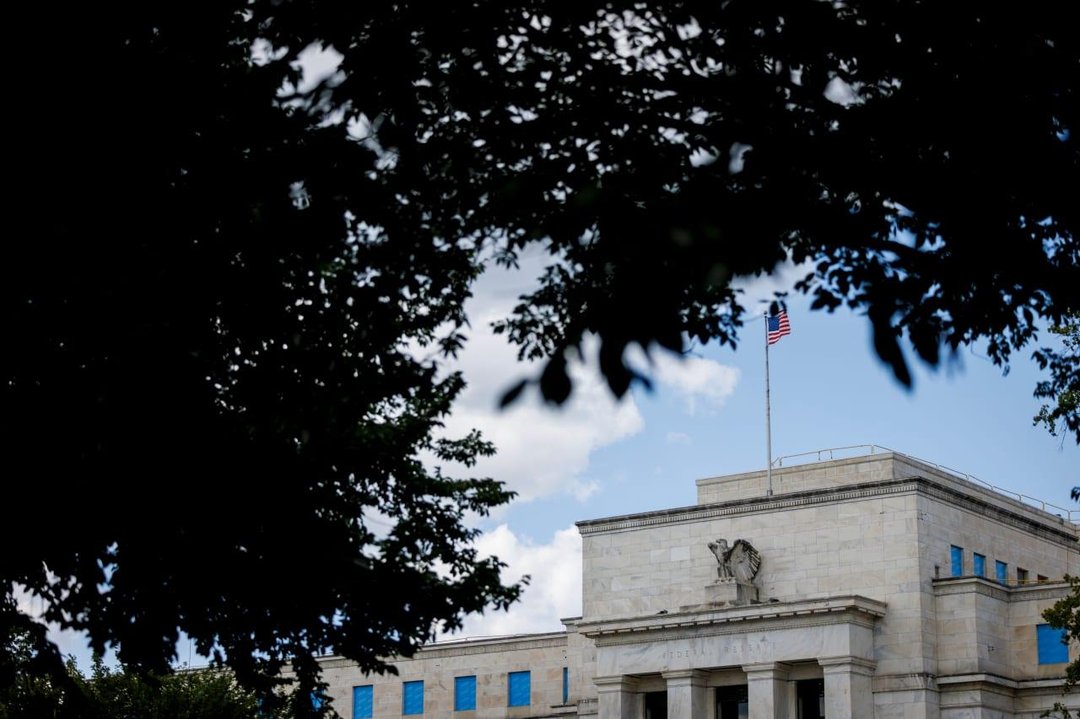
By Sabrina Escobar
Aug. 26, 2024
It’s (almost) official: interest rates are about to get lower. Federal Reserve Chair Jerome Powell said as much in his keynote address on Friday at the central bank’s Jackson Hole Monetary Policy Symposium.
“The time has come for policy to adjust,” Powell said. “The direction of travel is clear, and the timing and pace of rate cuts will depend on incoming data, the evolving outlook, and the balance of risks.”

Ting Shen/Bloomberg
Markets expect the central bank to start cutting rates at the Sept. 17-18 meeting of the Federal Open Market Committee. That would be the first reduction in interest rates in more than four years—marking the start of a new monetary-policy cycle that is certain to have ramifications across the U.S. economy.
Whether you’re a homeowner, an investor, or simply someone looking to stretch your savings, preparing for that shift can help you make the most of your money.
Here are five things to consider:
Take Stock of Your Finances
Before making any moves, take a step back and understand your finances, experts say. Review your accounts, loans, and asset allocation to create an overview of your financial situation. Knowing where you stand can help you decide where to park your money next.
If you have a financial advisor, this is a good time for a routine checkup, said Sam Taube, lead writer at NerdWallet. An advisor can help you understand how lower rates may affect your situation and re-evaluate your portfolio if necessary.
Lock In Fixed-Income Rates Before They Drop Even More
Fixed-income yields have been dropping, but it isn’t too late to lock in an attractive annual percentage yield, said Greg McBride, chief financial analyst at Bankrate.
Top yields for a six-month certificate of deposit, for instance, are still above 5%, while three-year CD yields can range between 4.5% and 5%, according to DepositAccounts. Treasury bill yields also remain attractive; six-month T-bills yield 4.9%, while two-year notes yield 3.9%.
If you’re concerned about liquidity, consider building a CD ladder by investing a portion of your cash in various CDs with different terms, or opting for a no-penalty CD.
Shopping around will give you peace of mind that you’ve secured the best rate. Just don’t dilly-dally, McBride said.
“There’s no advantage to waiting,” he said. “If you have your eyes on a CD, now’s a great time to lock in a yield that will likely outpace inflation.”
Monitor Mortgage Rates for Buying or Refinancing Options
Mortgage rates are starting to decline, and are expected to drop further. Some forecasts predict rates could end the year in the mid-to-high 6% range, down from a spring high of 7.22%.
This is good news for prospective buyers waiting for lower rates. If you’re planning to buy, start preparing—gather loan paperwork, hire a real estate agent, and compare mortgage options.
Homeowners who bought within the past three years could benefit from refinancing their mortgage. If you took out a mortgage above 7.5%, you might be able to refinance closer to 6% today, and potentially lower soon, McBride said, potentially saving hundreds of dollars a month.
That said, refinancing costs can range between 2% to 5% of the new loan, according to Bankrate. So before forging ahead, you should run the numbers to determine if the transaction would break even, said Frank Paré, president and managing partner at PF Wealth Management Group. Refinancing starts making sense if rates drop anywhere from three-quarters to one percentage point from your current rate, particularly if you plan on living in your home for many years, he said.
“That would be a time to look at refinance and running the numbers, not just doing it blindly, but understanding, OK, how much of a savings am I going to really get from this?” Pare said.
Keep Paying Down Credit Cards and Other Expensive Debt
While many credit card annual percentage rates are variable and often move in tandem with the federal-funds rate, you shouldn’t expect much relief from the Fed’s rate cut. At most, the central bank will reduce rates by half a percentage point (likely less), which experts say will do little to put a dent in APRs that can sit close to 30%.
“It’s going to take a lot of rate cuts from the Fed to bring that down in a meaningful way,” McBride said.
In other words, you can’t sit back and wait for lower rates—you have to continue to pay down that debt.
If your interest payments are overwhelming, consider asking your credit card company for a lower APR or applying for a balance transfer credit card with a 0% introductory APR, McBride suggested.
Alternatively, homeowners could consolidate their debt with a cash-out refinance, borrowing more than they owe on their mortgage and using the difference to pay off credit card debt at a lower rate.
Don’t Forget Your Financial ABCs
There’s still a lot of uncertainty about whether the Fed can pull off a soft landing, which would balance growth to avoid inflation while preventing a recession.
That means the next few months are likely to be volatile, Paré said. At the end of the day, however, time in the market beats timing the market, he added, so stay the course if you already have a long-term investment strategy. Keep contributing to tax-advantaged retirement accounts, such as a 401(k) or an IRA, and make sure your portfolio is diversified to help offset any near-term fluctuations.
It also can’t hurt to be prepared for an economic slump by bulking up your emergency savings.
After all, this is shaping up to be a long ride—and we’re just getting started.
Write to Sabrina Escobar at sabrina.escobar@barrons.com
This Barron's article was legally licensed by AdvisorStream.
Dow Jones & Company, Inc.



